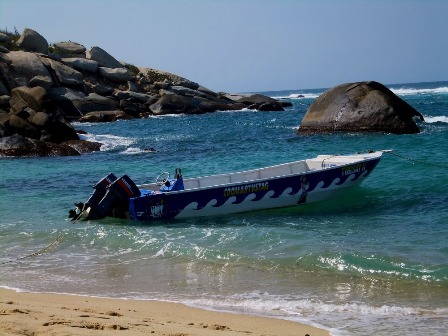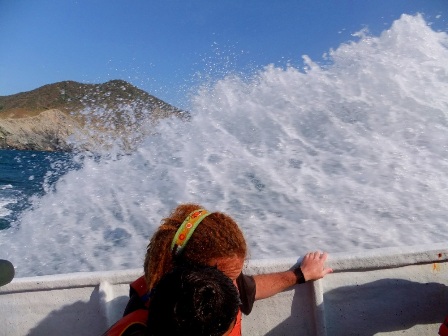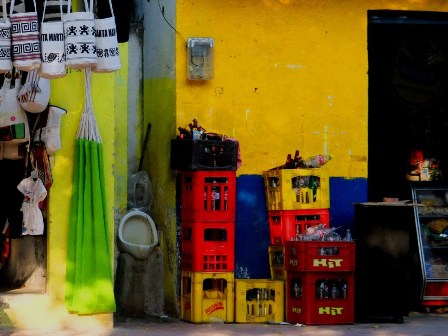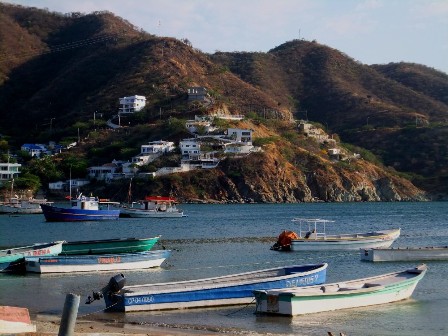| Santa Marta & Around March 2011
|
|||||||||||||||||||||||||||||||||||||||||||||||||||||||||||||||
| < Previous: Tayrona N.P. | < Begin Trip > | Next: Santa Marta > | |||||
| < Another city in Colombia > | < Another Country > | ||||||

Custom Search
|
|
 |
On the left is the boat Tibisay II, which sails once a day between Cabo San Juan De La Guía and Taganga. |
 |
Anytime a high wave came, we got wet again and again. Of course the boat personnel (3 guys) took care of the bags, putting them on a dry storage place. Also, the boat had two engines, because if one failed, with such an agitated sea, we would have been in big troubles! The best thing of the boat ride was the landscape. It was amazing to see it changing! The western part of the Tayrona Park, where we stayed, is really green and dominated by rainforest. To the west, the mountains become arid, and the vegetation changes completely. |
 |
After an unforgettable boat ride from Cabo San Juan de la Guia in Tayrona National Park, we arrived to the pleasant little fishing town of Taganga. |
 |
Taganga is a small town with a lovely atmosphere. |
 |
Taganga is known for being a party town. Travellers and backpackers from all over the world come here to spend a few days while exploring the area. |
 |
A lot of people prefer to be based in Taganga rather than in Santa Marta. |
|
|
|
 |
The place was already inhabited when the Spaniards came. The Tagangas and the Gairas people were among the first to embrace the christian faith, opposing little or no resistance. Taganga was established as an Encomienda, legalizing the work of the natives, producing fish and pearls. |
 |
There was loud music in some of the barrs of the main pedestrian waterfront street, and some people already drinking and dancing. |
 |
Taganga was a nice surprise on the road, aa nice visit that wasn't planned. |
 |
Colombia Links:Colombia official Tourist boardLonely Planet Colombia guides Taganga on Trip Advisor Compare cheap flights to Colombia Cheap Hostels in Taganga Book Hotels in Taganga Share on Facebook |
 Custom Search
|
|
|
|
|
| < Previous: Tayrona N.P. | < Begin Trip > | Next: Santa Marta > | |||||
| < Another city in Colombia > | < Another Country > | ||||||